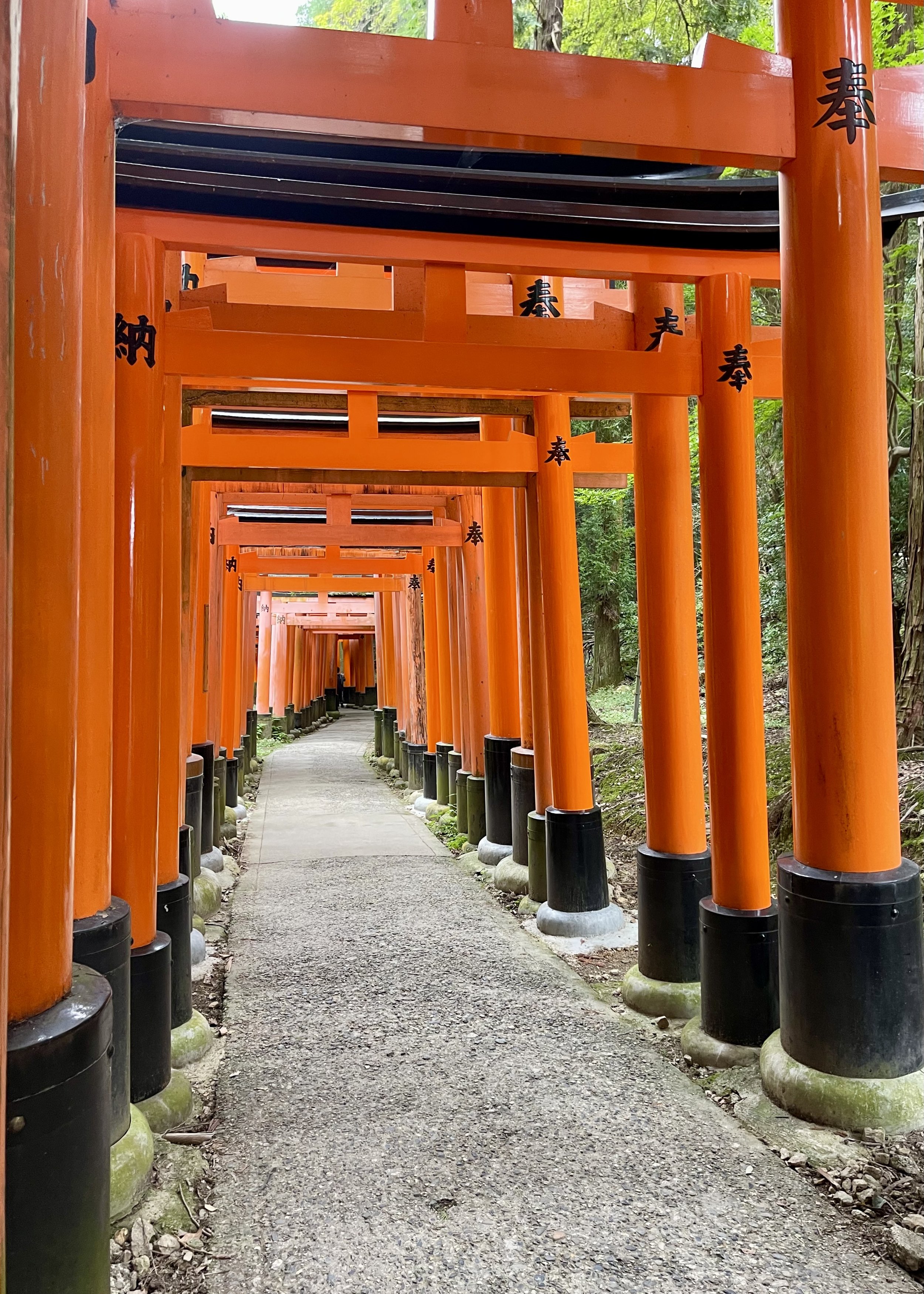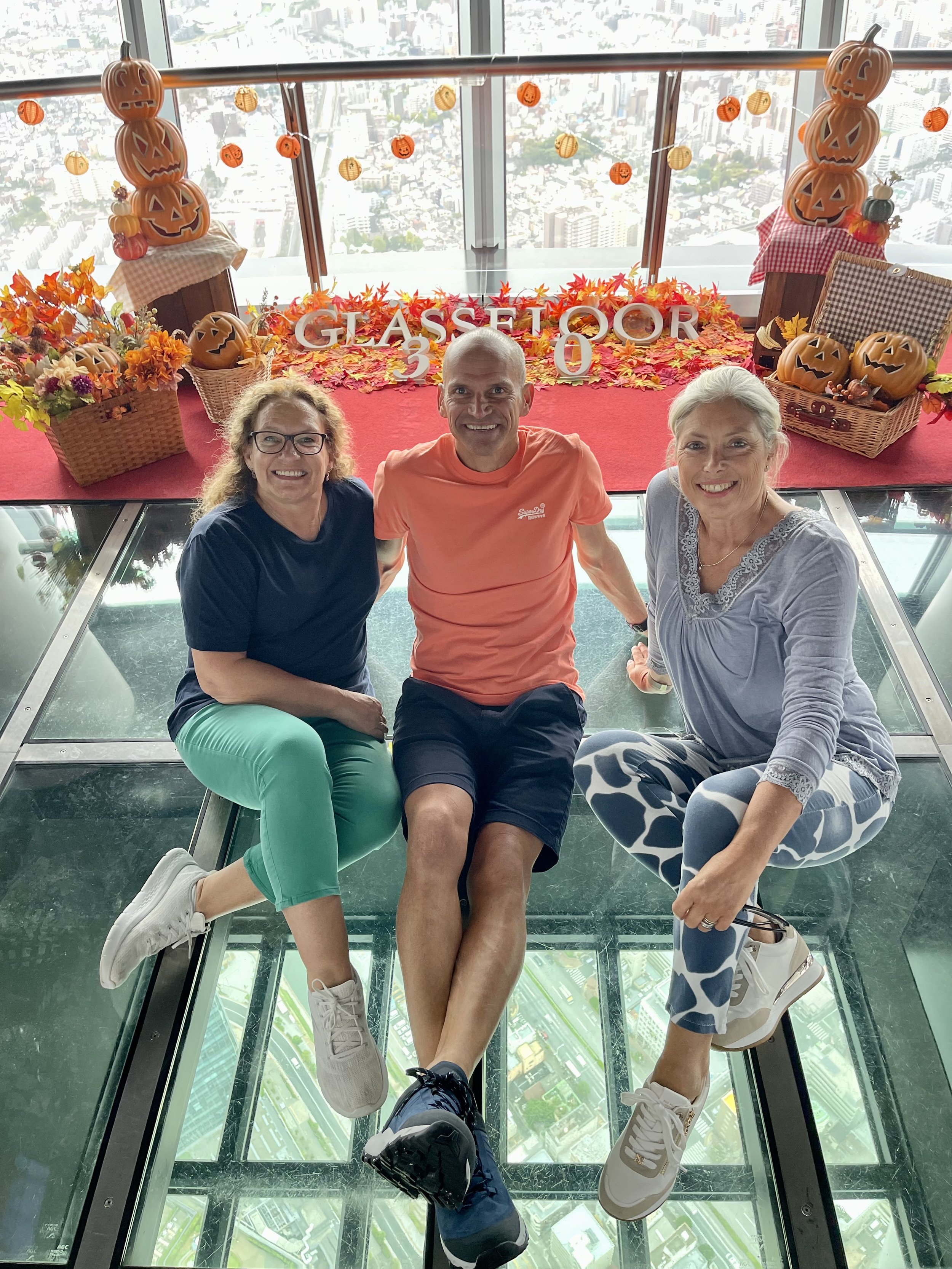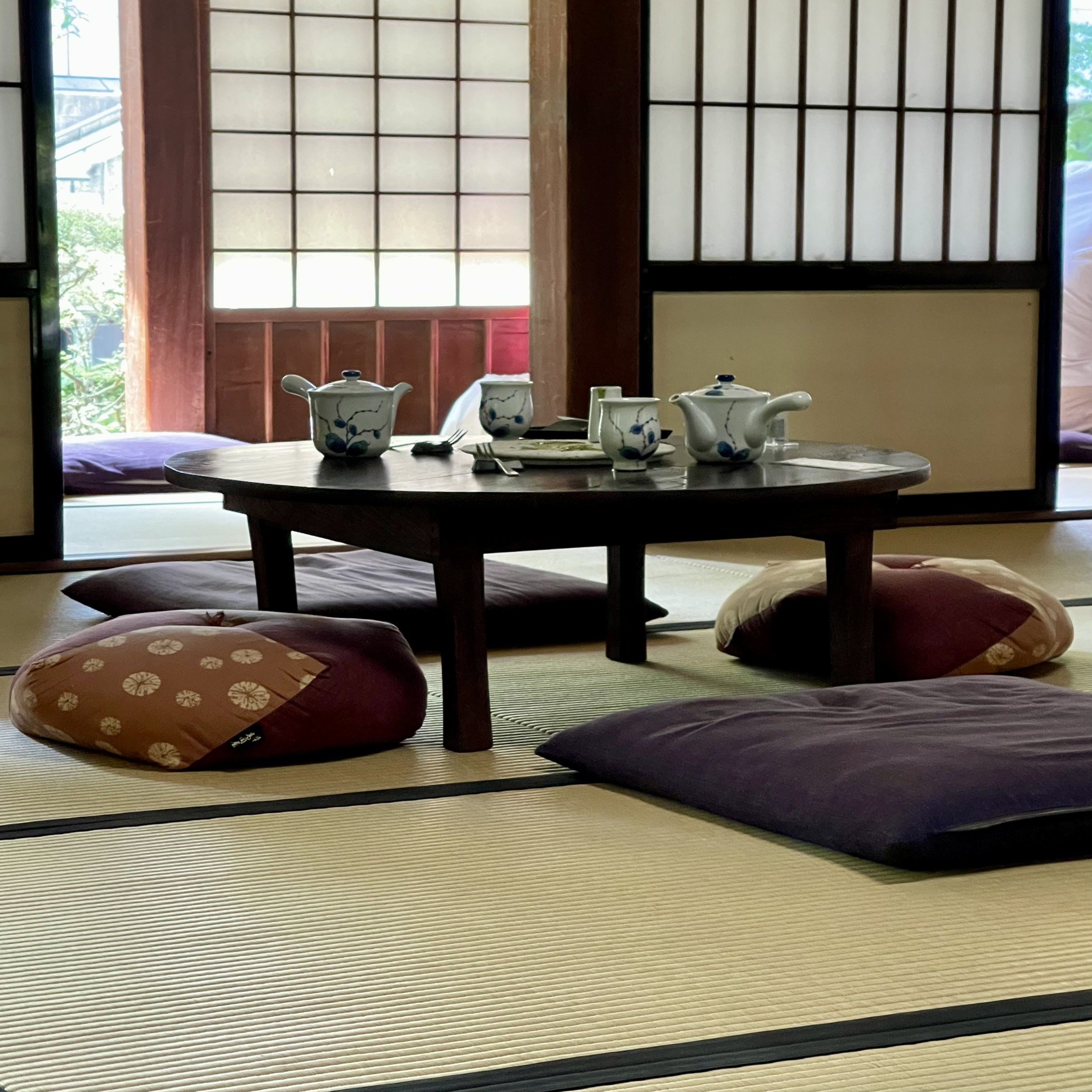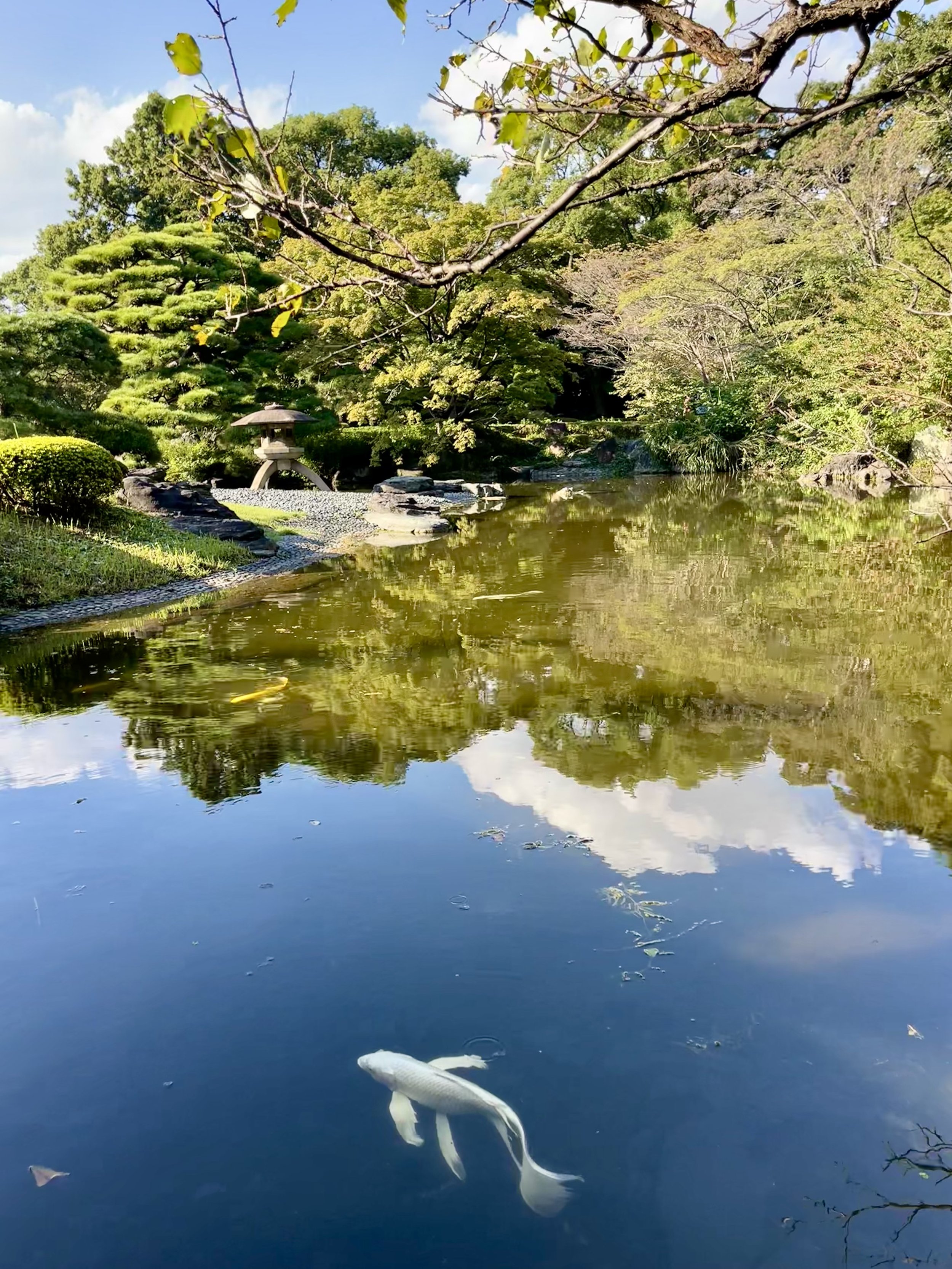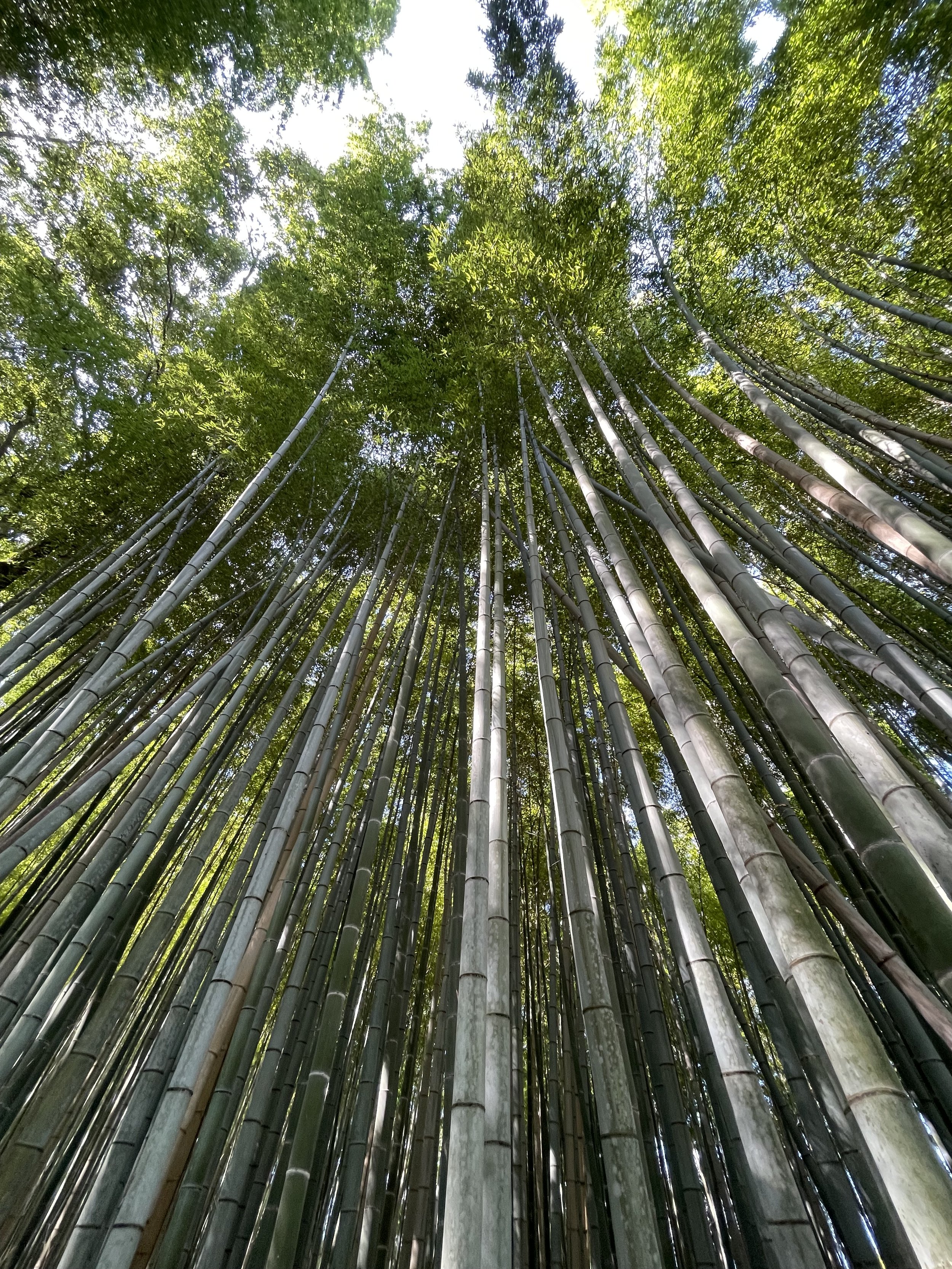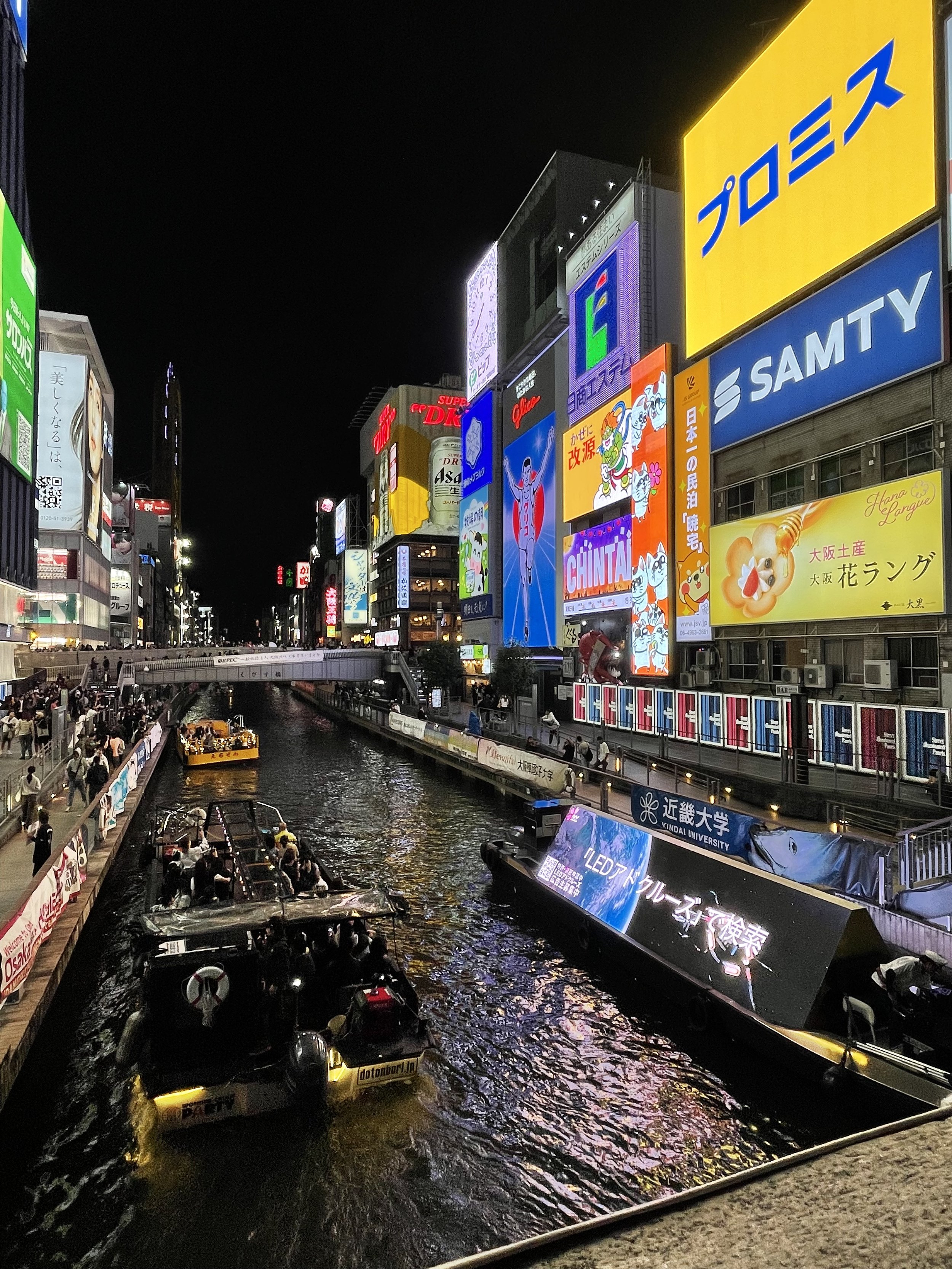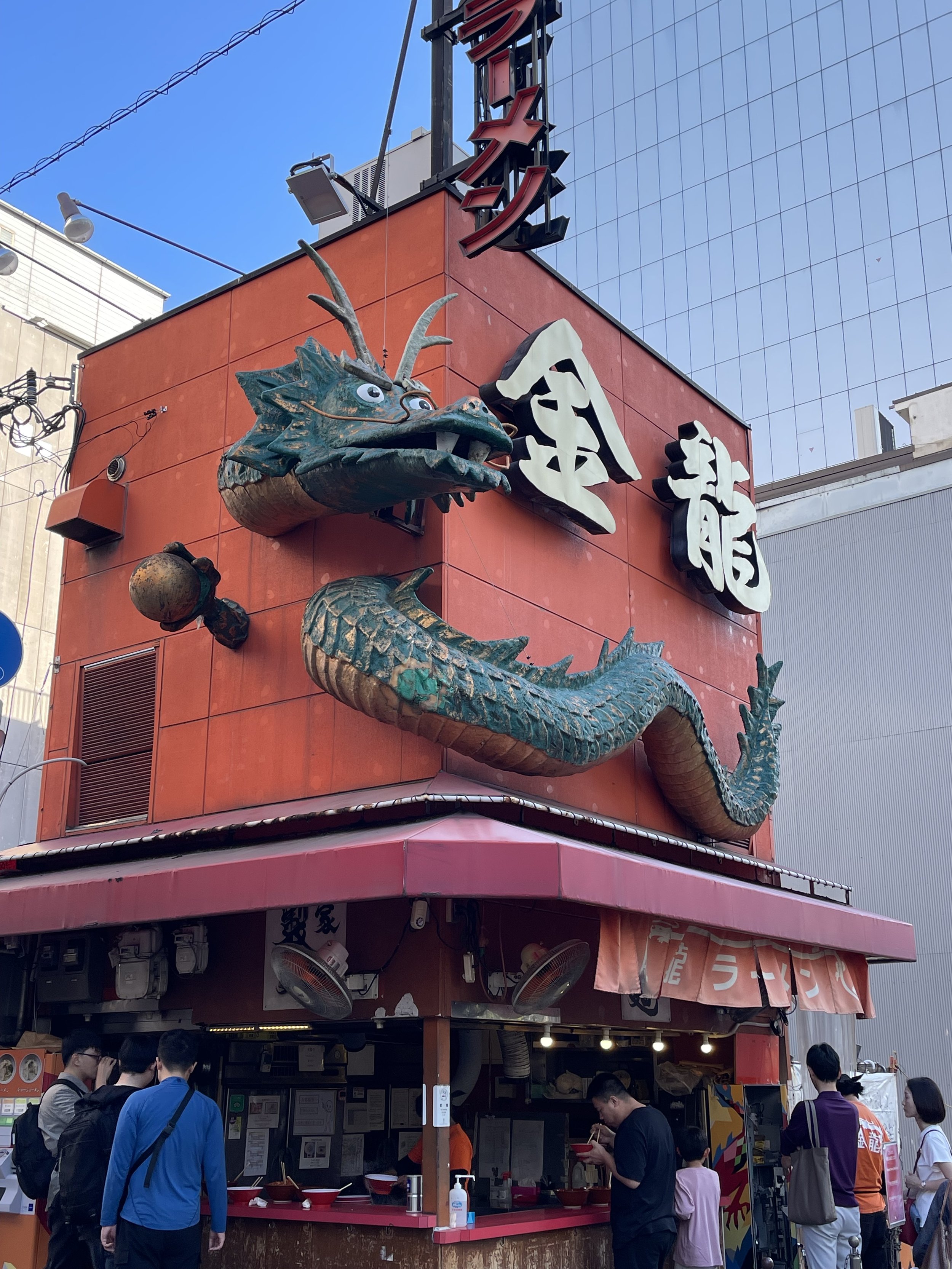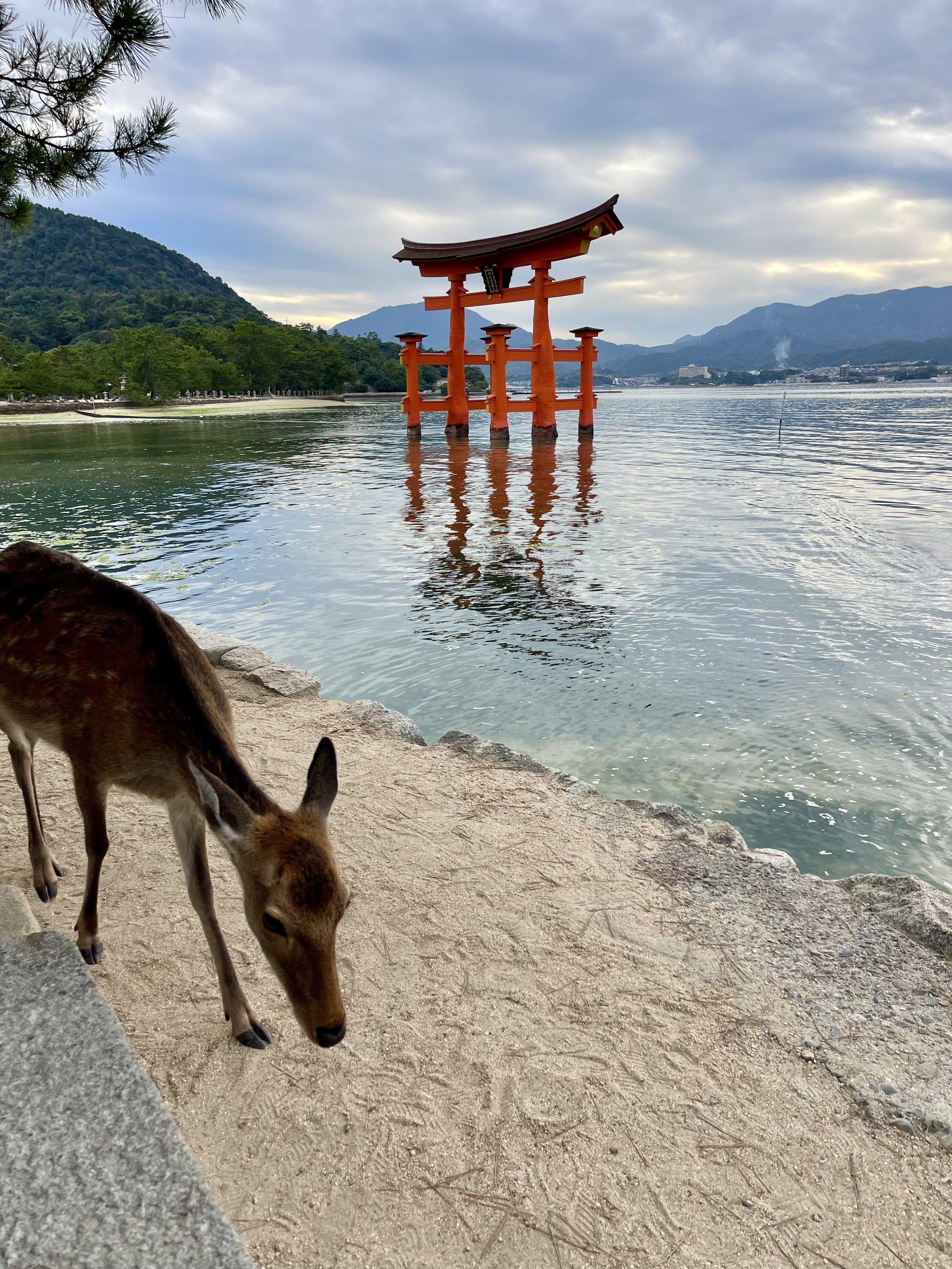Places to visit in Japan
Japan is a huge country in South East Asia, so calculating how much could be squeezed into a nineteen night stay was difficult.
My brother, sister-in-law and I narrowed it down to as many key cities and sights as would be possible. We created a 2,000km round trip which included Tokyo, Osaka, Kyoto, Hiroshima and Miyajima, and a small city called Toba.
Several of our choices were determined by places my late mum had wanted to visit.
Some of the ‘Thousand Torii’ gates leading to the Fushimi Inari Shrine constructed in 711AD
Japan is a beautiful and fascinating country, full of juxtapositions: ancient versus futuristic; megacities versus forests and beaches; sea versus snow.
There’s so much to say about Japan that I’ve written another post called ‘Joyful Japan’ which provides details on particular highlights and costs, the food, places to stay, best time of the year to visit Japan and a couple of downsides (yup, there are some).
Tokyo Tower built in 1958. The tallest tower until the Skytree was constructed in 2012.
Things to see in Tokyo
Japan’s largest city is vast. According to Wikipedia the population of the Greater Tokyo Area is around 41 million people, almost three times bigger than the Greater London region of 15 million. It has been Japan’s capital since mid 19th century and was previously called Edo.
After a 12.5 hour flight we arrived late morning and, having checked in to our hotel above Shiodome Station, wasted no time before exploring the nearby district of Ginza. We spent four nights in Tokyo and crammed as much in as we possibly could. We used the subway and trains to get to stations close to a specific site, and sometimes back to the hotel. In three and half days I walked nearly 90,000 steps.
Japan Tips
Comfortable walking shoes - These are essential as you will do a lot of walking, even just getting through the mega sized train stations. During our holiday we totalled a staggering 200+km of walking, my biggest step count being 29,273 on our last day in Tokyo.
The glass floor on 340th floor of the Skytree
Tokyo SkyTree
At 634m/2080ft it’s the tallest tower in Japan. We did this on our first morning and happened to receive golden tickets celebrating the fact that as of September 2024 more than 50,000,000 people had visited the tower. I love heights so it was a must do - my previous tallest tower was the CN Tower in Toronto where my youngest daughter and I did the Edge Walk.
My travel partners on this trip took a bit more persuading but eventually agreed to join me. Understandably, the speed of the lift’s ascent to the first observation level called the The Tempo Deck unnerved them. However, the glass fronted lift up to the higher Tempo Galleria observation deck made them feel a little icky.
The weather was great which enabled miles upon miles of 360 degree city views, even as far as Mount Fuji - the only time we saw it. Once back down on the lower deck, they felt comfortable enough to sit on the 12mm thick glass floor for a photo.
We got to the tower at 9:45am for our 10am time slot, and were on the top deck by 10:15am. It was virtually empty which made walking round and seeing the city sights more leisurely. I recommend buying a ‘Combo’ ticket for ¥3,100 around £16, which allows you access to both observation decks.
We spent two hours there, then walked to the Senso-ji Buddhist Temple, where we drew sticks to find out our fortune.
Shibuya Scramble Crossing, Tokyo
That evening we visited the world famous multiple-way pedestrian crossing. It’s estimated that between 2,000-3,000 people cross in at one time. The Shibuya area is far more neon and electric than Ginza. It has a real buzz especially at night.
We found the statue dedicated to Hachiko, a Akita dog who lived between 1923-1935. He was owned by a university professor and would wait at Shibuya Station for his owner to return from work. He captured the nation’s heart as, even after the professor died in 1925, Hachiko waited for him every day for the next ten years.
We tried to get into The Lost Bar recently opened by Chris Broad (Abroad in Japan - see below) but it was extremely busy.
Apparently there’s a panda 3D billboard here but we couldn’t find it.
A lovely place to have a Japanese tea but not great if you have bad knees
National Museum of Nature and Science, Ueno Park, Tokyo
On our third day, we headed here. Their exhibits include full samurai armour and swords, kimonos, crockery and theatrical face masks. There are also traditional Japanese tearooms in the grounds where we left our shoes outside and sat on a tatami floor drinking green tea.
Unfortunately, we missed the Pokemon design drain covers in Ueno Park near the museum. Look out for these decorated covers all over Japan.
teamLab Planets, Tokyo
Once back in the city we made our way to the sight of this immersive sensory experience. Be prepared to remove your shoes and socks. A little out of the way but well worth a visit. The water room is amazing. We had a 4pm time slot and spent about 90 minutes working our way through the rooms.
Here’s a link to their website. There is another teamLab in Tokyo called Borderless which I understand has different exhibits.
Tokyo Tower
Our hotel wasn’t far from the Tokyo Tower, so we made the decision to walk to it that night. At 332.9m/1,092ft it’s about half the height of the SkyTree. We hadn’t pre-booked these tickets so paid slightly more at the desk for the Top Deck access (¥3,500/£18) than we would have online (¥3,300/£17).
The Japanese have embraced Halloween and as it was mid October, on the Main Deck the Tower there was a clever Halloween themed visual display projected on to the windows depicting ghosts and witches dancing over the city lights.
Tokyo Imperial Palace and Hibiya Park
On our last day we booked tickets for a guided tour around the Imperial Palace. Visitors are not allowed in the palace but can walk around the grounds and see the stunning Japanese gardens. We walked through the pretty Hibiya Park to a huge Starbucks where we met our palace tour guide.
A lone white coy carp
Akihabara Electric Town, Tokyo
That evening we revisited Shibuya and went on to Akihabara where otaku can be easily seen. Young women dressed in maid outfits lining the street enticing visitors to the maid cafes. It’s busy with neon lights and Anime billboards.
Probably a gamer’s and cosplayer’s paradise but I found it a little uncomfortable, seeing such young women dressed in overtly suggestive clothing.
Places to eat
Kyushu Jangara Ginza- On our first evening my brother found a ramen restaurant with a decent Google Review. This became the method by which we found some of the places we ate, but be warned, we usually turned up to a large queue, so be prepared to wait. Most did not take reservations - there’s no need when your restaurant is so popular.
The queueing system for this restaurant caught us out slightly as we accidentally joined the queue for a neighbouring restaurant for the first 15 minutes. As the place is so busy, orders are taken whilst outside, then we were called in to a little restaurant with about four or five tables. Our first taste of a Japanese ramen broth was a huge bowl full of flavour that cost around ¥1600/£8 a bowl.
Japan Tips
1). Avoid animal cafes and aquariums - Unfortunately, animal welfare in Japan is poor and it is strongly recommended not to support these businesses.
2). Rude to eat and walk - It’s rude to eat and walk at the same time, so it’s better to find a cafe or restaurant to stop at.
3). Fires - Throughout the centuries, Japanese cities have suffered major fires, so many historical sites are partial or full reconstructions.
Bamboo Forest at Arashiyama
Things to see in Kyoto
This city, originally called Heian-kyō, was Japan’s capital for many centuries, from the late 8th century to the year Tokyo became the capital in 1869. It has the reputation of being more traditional than Tokyo, Yokohama and Osaka. There are traditional Japanese homes and temples, and several high-rise buildings, but we didn’t see any skyscrapers.
We only stayed for three nights which was plenty for what we intended to see and do.
The Thousand Torri Gates
These are the bright vermillion coloured gates that you may see all over your social media feeds - be prepared for Instagram and TikTok content creators rudely taking hundreds of photos of themselves, ignoring the queues of people waiting patiently to take one or two photos. I hasten to add that not all content creators are this ignorant.
The gates are located at the Fushimi Inari Shinto Shrine. We arrived at 8:30am and decided to walk to the top. It is a strenuous walk with many steps which I do not recommend doing passed late morning. It took us around 75 minutes, allowing for photos and meanderings around the walkways. Take plenty of water as you will sweat profusely.
At the top is a shrine dedicated to those who have passed away. There’s a little shop selling candles where I bought one and lit it in Mum’s memory.Bamboo Forest at Arashiyama
There were thousands of visitors when I arrived late morning. The bamboos were impressive - tall and straight. It’s worth the walk up to the top of the park for a view over a river below. Beware of wild monkeys - I didn’t see any but there are signs so I tucked everything loose in a pocket and held on to my rucksack. An unusual sight was the number of people dressed in geisha and samurai costumes wandering around. Apparently it’s a thing and there are many costume hire shops in the area.
Nishiki Market
There are fish stalls, many selling both raw and cooked fish dishes. Stalls and walkways are decorated with hanging paper lanterns which light up as night falls. The market has a no photo policy.
We found a great place to have ramen called the Ramen Kyoto Engine where I tried their delicious signature creamy ‘Kyoto Zesty Ramen’. We turned up to a large queue and were handed a number with a rough wait time, which allowed us to mooch around the market and come back.Gion District
A walk around Gion at dusk led to an amazing encounter with a couple of true geishas. They just happened to walk around a corner where were stood chatting. They were beautifully made up, elegantly poised, and gracefully walked down the street. We couldn’t believe our luck. Just them and us. It felt like a scene out of a movie.
The obligatory photo in front of the iconic Glico Running Man
Things to see in Osaka
Japan’s third largest city known as ‘Japan’s Kitchen’, is hosting Expo 2025, and was briefly Japan’s capital in the 7th and 8th centuries.
If Kyoto is the shy and reserved child, Osaka is most definitely the loud and extrovert sibling.
Many people prefer Kyoto to Osaka and we were a bit torn on how many nights to stay in each city. We decided to use Osaka as a travel base for Nara, Kobe and Universal Studios, so booked for five nights which was a perfect decision for us.
We took a short local train line ride from Kyoto to Osaka at a cost of ¥580/£3.
Busy waterways under the neon lights of Dotonbori
Giant billboards
Dotonbori
Wow! It’s insane.
I don’t think I have ever seen this number of people in one place before, unless it was at Wembley Stadium. There were thousands of people, many of who congregated under the famous Glico Running Man sign for a photo.
If you look up and left from the bridge where you can see the sign, you will see a large billboard. This is where the 3D Akita puppy sign appears. Even watching it, it was hard to believe that it was real. The puppy appears to stretch out of the screen. Mind-blowing!
The size and ingenuity of shop and restaurant advertising boards and models is also hard to believe. Massive dragons intertwined in and out of letters, a massive chef slowing turning over the river, and chopsticks holding noodles apparently floating in the air.
Umeda Sky Building
At 173m/567ft high it’s not the tallest building in Osaka but it’s distinctive design, two separate skyscrapers connected by glass escalators that cross the void, makes it stand out. It’s a great place to watch the sunset, which is what we did, followed by a cocktail in the Stardust Sky Lounge. Crossing between the buildings on the escalators is not for the faint hearted.
Tickets are available at the reception, just follow the signs.
Go karts
It’s possible to hire go-karts and be led round the city by a guide. When I realised the route was actually on the main roads within the city traffic, I decided against it, but it did look fun. You can do this in Tokyo too.
Universal Studios, Japan
We weren’t sure whether to this or not but glad we did. It’s only a ten minutes train journey from Osaka Umeda Station - a one way fare costing ¥190/£1.
It’s a great mixture of American, British and Japanese characters and design. The entrance ticket cost us £52 each. We didn’t go to the Super Nintendo World part which requires specific tickets. Harry Potter World was great but sadly didn’t have the exhilarating Hagrid's Magical Creatures Motorbike Adventure which I rode in Florida. Jaws no longer in Florida was a great throw back.
There are a couple of great rollercoasters called the Hollywood Dream one going forward the other backwards. But by far the most terrifying, and I’ve ridden a few rollercoasters in my life, is The Flying Dinosaur. Intense, petrifying, and fast don’t even come close to explaining the thrill of the ride.
Places to eat
Cafe Sunshine for fluffy pancakes
Having checked in, our first mission was to find some of Japan’s famous fluffy pancakes. It was harder than expected.As Japan’s department stores and shopping malls are on multiple levels, many of which are underground, Google Maps struggles (similarly in train stations). The App advised us we had arrived at Cafe Sunshine but all we could see on street level was a boarded up store. We discovered the cafe was indeed where the App told us, just three floors below street level. All three of us had the fluffy pancakes topped with cream and a maple style syrup, with coffee or green tea. They were divine and the total cost was ¥4125, around £21.
Rikuro’s for baked cheesecake
Apparently there are eleven Rikuro bakeries in Osaka, the main store being in Namba where there is a sit in cafe which we didn't have time to frequent. These creations were popular with local customers, and then they started trending on social media and are now known worldwide.I love a good cheesecake but not a fan of baked ones. According to my daughter, it would have been a sin not to try some whilst in Osaka. We found the Namba store and although the queue was lengthy it moved quickly. It was fascinating watching the bakers’ efficient system. Tray after tray of freshly baked cheesecakes straight from the oven were unwrapped and placed in the window display, only to be bought within seconds.
Like most things in Japan, they are reasonably priced - a whole one cost ¥965/£5 - and, even though we didn’t eat it until we returned to the hotel about 4 hours later, it was delicious.
Rikuro’s baked cheesecakes
Japan Tips
Dinner is cheaper below ground - On street level Google advised that many restaurants near our Osaka hotel cost ¥10,000+/£50 per head. Go underground where it seems the local office workers go. The basement levels in the shopping mall were full of cheap and varied dining options. The Japanese, usually subdued, almost submissive, were there to let their hair down. The atmosphere was relaxed yet vibrant. The noise of voices was almost deafening.
Adorable deer roaming freely in Nara Park
Things to see in Nara
Japan’s oldest capital city is a short train ride from Osaka Umeda Station - a one way ticket costing ¥590/£3. The outside of the trains are decorated with scenes from Nara Park.
Nara Park
Here for the deer.
I’m sure there are many more things to do in the city but the deer were our only reason for the day trip. They are protected, and legend has it that a god arrived at a shrine riding a white deer that was believed to be a helper to the gods.
The entrance to the park was crowded with many deer vying for your attention, well mainly your crackers which can be bought at the entrance to the park.
The park is vast so just keep walking and you will see more deer the further into it you get with far less people. At one point there was just six people and around ten deer. The park is so big that it could be easy to lose your bearings so a quick check on Google Maps gets you returning in the right direction.
Great Buddha Hall
Do not make the mistake we did, and miss it!
It’s where the largest bronze statue of Buddha in the world can be found, weighing an estimated 300 tons. We only read about it after we had left the park.
The A-Bomb Dome previously the Hiroshima Prefectural Industrial Promotion Hall
Things to see in Hiroshima
This historically significant city is 500 miles/800 km from Tokyo and easily reached by the Shinkansen. We took the fast Nozomi train on the Tokaido line which reaches speeds of 300kmh/186mph, and took 3 hours. What a ride!
I doubt anyone reading this is unaware of the horrific event on 6 August 1945, when America dropped the first ever atomic bomb on the city, killing an estimated 150,000 people. Three days later, dropping another on the city of Nagasaki with a further 74,000 killed. If I ever travelled to Japan, I knew I would visit the city to pay my respects to those who died.
My assumption of the city was that it would be low-key and perhaps a little morbid, but I could not have been more wrong. It was a thriving and friendly city, and we wished we had stayed one more night.
Hiroshima Peace Memorial Park
This is where the ‘A-Bomb Dome’ is situated which was designated UNESCO World Heritage site since 1996.
From the museum, we started walking towards the haunting ruin of what was once the busy Hiroshima Prefectural Industrial Promotion Hall. We passed the arched stone Cenotaph for the victims where a register of over 220,000 people who died is kept in a stone chest.
Then the Childrens’ Peace Memorial showing a girl with a folded ‘paper’ crane above her head in homage to the many children killed, then crossing over the river to the dome side.
There was a peaceful but somber and reflective mood emanating from those paying their respects. I walked around the whole dome, reading the information plaques about the bomb and innocent victims, and couldn’t hold back the tears.
We crossed back over the river and found a large Peace Bell which we respectfully rang once in the hope of world peace. It made a deep beautiful sound. We saw a mound under which thousands of victims were buried, and a memorial to the many Koreans who were also killed.
At 8:15am on the anniversary, the time the bomb detonated, a moment of silence is held, wreathes are laid and speeches made.Hiroshima Peace Memorial Museum
As you may expect some of the exhibits and information in the museum are harrowing, but it is hoped that by educating people, an atrocity like this will never happen again.
2024 Nobel Peace Prize
On 11 October 2024, the Norwegian Nobel Committee awarded the Peace Prize to a Japanese group of atomic bomb survivors from both Hiroshima and Nagasaki. They are called Nihon Hidankyo, also known as the Hibakusha, and were young children when the bombs were dropped. They have worked tirelessly to educate the world about the devastation of nuclear war and to promote peace.Places to eat
We found two fabulous eateries - a large Spanish one and tiny Japanese one.
Sante - After the emotional Peace Memorial visit we were pretty subdued, so to come across this Spanish restaurant was exactly what we needed. It was busy, the food was great, and the staff were upbeat. Within a few minutes of being seated our mood was lifted. We laughed a lot that evening, with both staff and other customers. After the Kobe beef, it was the most expensive place we ate at around ¥7,700/£40 per head, but we did have a couple of bottles of wine.Momijitei - The following evening my brother found this okonomiyaki restaurant on Google. In fact we found it the first night but the queue was about 45-60 minutes and we weren’t prepared to wait. So we turned up early the following evening, and although there was still a 30 minutes wait it was well worth it. Such an authentic experience, and cheap - between ¥880-1500/£5-8 per pancake dish.
And the very generous serving of sake was fab.
They only accept cash.
Japan Tips
Hiroshima Peace Museum - Buy your tickets before you head to the A-Bomb Dome which removes the need to queue. We spent an hour and a half walking around the park and dome, visiting each memorial and paying our respects, then headed back to the museum which took another hour or so to walk round.
O-Torii gate with a deer on the beach
Things to see in Miyajima
A short ferry ride from the mainland lies the island called Miyajima. It literally translates to ‘shrine island’ and is so called after the Itsukushima Shrine and iconic O-Torii gate which appears to float in the sea.
Ferries leave from Miyajimaguchi Port near Hiroshima, or Hiroshimako Station and the Grand Prince Hotel.
Floating O-Torii Gate, Miyajima
The shrine was built in the late 6th century and was designated a UNESCO World Heritage sight in 1996.
The ferry left from right outside our hotel and took just twenty minutes. We spent the day on the island arriving at 11am when the sea was out so we could walk all the way round the O-Torrii gate. We booked the latest return ferry at 5pm, so that we could take photos of the gate surrounded by the rising tide.Deer on Miyajima
We were pleasantly surprised to find wild deer roaming the island. They were very friendly but not as well-behaved as those in Nara Park. If you have food they are likely to snatch it from your hands, bags and pockets. One grabbed my rucksack whilst I was sat on the floor looking at the O-Torri gate.
Ropeway cable cars
Take a walk (steep in places) up to the Ropeway which takes you to the summit of Mount Misen on Miyajima. There is a fire on the summit that has apparently been burning since it was lit by a Buddhist monk 1200 years ago. The flame from this fire was used to light the ’Flame of Peace’ in Hiroshima Peace Memorial Park.
Unfortunately, we left it a little late and the queue was too long for us to risk missing the ferry. I have since learned that it is possible to pre-purchase tickets online.
The Wedded Rocks
Things to see in Toba and Ise
A sleepy town off the beaten track with a surprising history.
It was by far the most difficult place to reach, being a three hour journey from Osaka on multiple trains, but it was a must do. It’s close to Meoto Iwa, otherwise known as the Wedded Rocks, that Mum had been so keen to see. We decided to spend our last three nights in a traditional hotel for some well-earned rest and relaxation.
The town is busier in the summer months, so as it was late October, it was very quiet.
Mikimoto Pearl Museum
We had no idea that this little town is where the world’s first cultivated pearls were created by a man called Kokichi Mikimoto, who ran a noodle shop and was always looking for ways to make extra cash. After several years of farming oysters, and set backs caused by sea algae and tsunamis, he and his wife successfully cultivated a pearl in 1893.
The museum tells his story and explains the process, with a shop displaying some of the many pearl creations and jewellery now sold around the world. A large single pink pearl was on display with a price tag in the tens of thousands of pounds.
Meoto Iwa aka the Wedded Rocks
A fifteen minutes train journey from Toba is the town of Futamichoe, Ise, where the Wedded Rocks and Shinto Futami-Okitama Shrine are located.
According to legend, these rocks are the parents of the islands in this Japanese archipelago, and couples often pray before them for a long and happy marriage. The larger rock represents the husband and smaller one his wife. They are tied together by a one ton straw garland known as a shimenawa. It is replaced multiple times a year on the spring tides and takes fifty men to carry it, a plaque showed that, coincidentally, this often happens on Mum’s birthday.
The Futami-Okitama Shrine has a torri gate and is surrounded by frog sculptures which are revered in Shinto beliefs. They are a symbol of protection for travellers ensuring their safe return. The Japanese word for frog is kaeru which translates to ‘return’.
Sayonara
And that’s a wrap - or should that be a maki roll.
Japan is everything I hoped it would be and more, and I’d love to hear if this post and my other one called ‘Joyful Japan’ have been of help.

